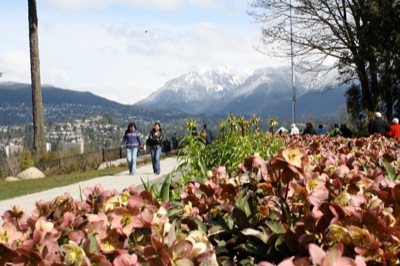
Stroll through Stanley Park
Stanley Park in Vancouver is not your typical tame city park. Most of the 1,000-acre park is a protected rain forest with trees hundreds of years old. I walked through some of the park’s dense evergreen forest, where green moss clung to the tree bark and ferns stretched across the ground.
“It’s a picture-perfect postcard day,” said Patricia Thomson, executive director of Stanley Park Ecological Society. “Where we stand today is really a rare forest and something to guard for the future. It’s probably the most well-known city park in Canada.”
City council officials created Stanley Park as its first resolution after Vancouver became an incorporated city in 1886. The park has retained its wild feel with thick hemlock and redwood trees everywhere.
Even during my short tour, I spotted two bald eagles, a raccoon and swans. Gardens also line the park’s walkways, with daffodils, hyacinths and many flowering trees.
Near Prospect Point’s beautiful view of the city and its mountain backdrop stand original totem poles from the First Nations, who used them as an artistic way to tell a story.
The solemn and mysterious totem poles at the park have interpretive displays below to explain the creatures carved into the wood. One mythical image often repeated in the First Nations’ artwork is the Thunderbird, who is remembered for feeding salmon to the native people when called upon. The snowy mountain peak he lived on, according to legend, is within eyesight of Stanley Park.









